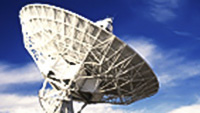Search and order online
Artemis - Next Generation of Telecommunications
- Video Online + Tape
- Title Artemis - Next Generation of Telecommunications
- Released: 24/02/2011
- Length 00:05:38
- Language English
- Footage Type Documentary
- Copyright ESA
- Description
On the 12 July 2001, ESA's next-generation telecommunications satellite, Artemis (Advanced Relay and Technology Satellite) will be launched on Ariane 5.
The ESA TV Service has produced a series of three pre-event Exchange Programmes with background footage on this satellite.
The first programme puts Artemis into the historic context of the development of satellite telecommunications since the launch of Sputnik in 1957, and into that of ESA's space application activities. Soundbites by Pietro Lo Galbo, Head of ESA's Telecommunications Department, outline the progress made in satellite communications and ESA's role in this segment dominated by commercial operators.
SCRIPT
Artemis - the next generation of telecommunications
On 4th October 1957, the first satellite was launched into space. The Soviet Union, the leaders in space technology at that time, put the first man-made celestial body into a stable orbit. Sputnik 1 sent messages to Earth by short wave before burning up in the atmosphere after a number of orbits.
That was also the birth of satellite communication. The USSR's technological lead and the unexpected success of its mission came to be summed up in the term Sputnik shock. After that, the USA joined in the space race, but only really overtook the Soviet Union 11 years later with the first moon landing. Also the USA started with launching unmanned satellites into space, the first of which in 1958. But the first man in space was a Russian. Almost 40 years ago, Yuri Gagarin circled the planet and came safely home. The USA was a year behind.
Whilst the race to the moon was seen as raising prestige and being greeted with frantic public acclaim, satelli









